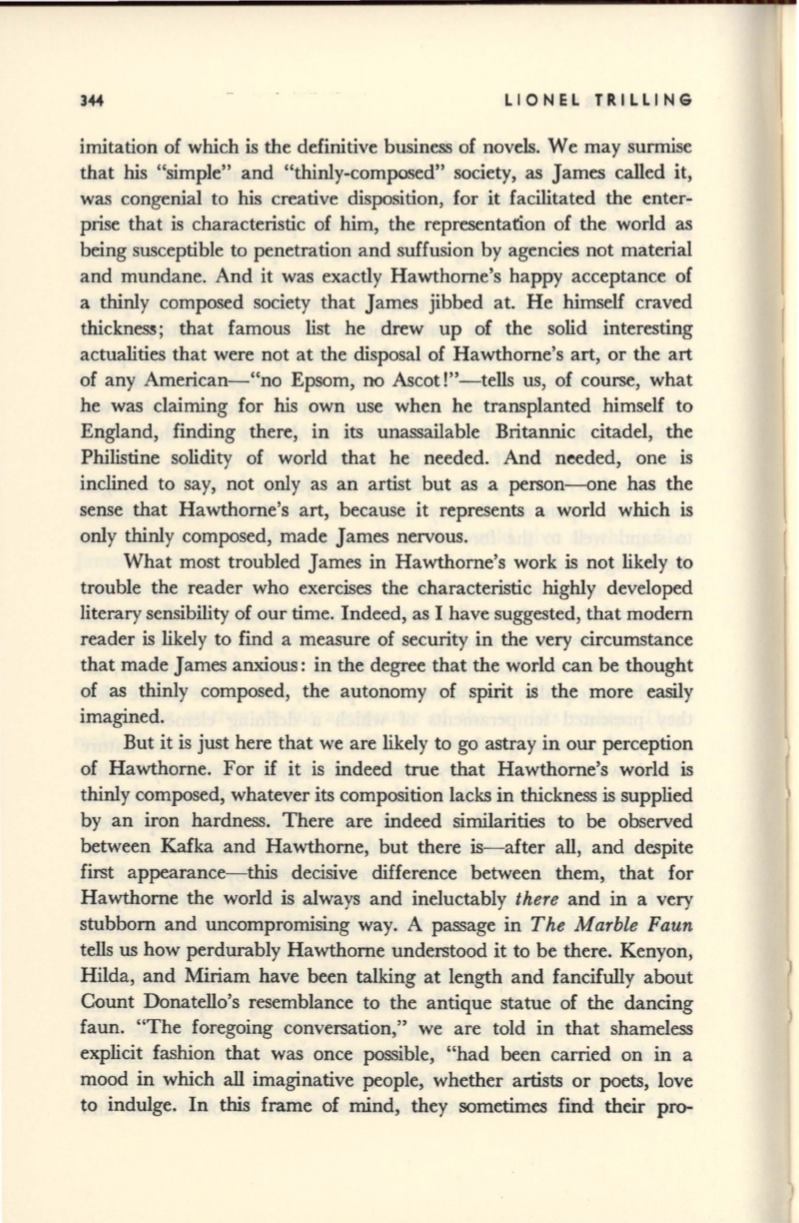
3+4
LIONEL TRILLING
imitation of which is the definitive business of novels. We may surmise
that his "simple" and "thinly-composed" society, as James called it,
was congenial to his creative disposition, for it facilitated the enter–
prise that is characteristic of him, the representation of the world as
being susceptible to penetration and suffusion by agencies not material
and mundane. And it was exactly Hawthorne's happy acceptance of
a thinly composed society that James jibbed at. He himself craved
thicknes5 j that famous list he drew up of the solid interesting
actualities that were not at the disposal of Hawthorne's art, or the art
of any American-"no Epsom, no Ascot!"- tells us, of course, what
he was claiming for
his
own use when he transplanted himself to
England, finding there, in its unassailable Britannic citadel, the
Philistine solidity of world that he needed. And needed, one is
inclined to say, not only as an artist but as a person--one has the
sense that Hawthorne's art, because it represents a world which is
only thinly composed, made James nervous.
What most troubled James in Hawthorne's work is not likely to
trouble the reader who exercises the characteristic highly developed
literary sensibility of our time. Indeed, as I have suggested, that modem
reader is likely to find a measure of security in the very circumstance
that made James anxious: in the degree that the world can be thought
of as thinly composed, the autonomy of spirit is the more easily
imagined.
But it is just here that we are likely to go astray in our perception
of Hawthorne. For
if
it is indeed true that Hawthorne's world is
thinly composed, whatever its composition lacks in thickness is supplied
by an iron hardness. There are indeed similarities to be observed
between Kafka and Hawthorne, but there is- after all, and despite
first appearance-this decisive difference between them, that for
Hawthorne the world is always and ineluctably
there
and in a very
stubborn and uncompromising way. A passage in
The Marble Faun
tells us how perdurably Hawthorne understood it to be there. Kenyon,
Hilda, and Miriam have been talking at length and fancifully about
Count Donatello's resemblance to the antique statue of the dancing
faun. "The foregoing conversation," we are told in that shameless
explicit fashion that was once possible, "had been carried on in a
mood in which
all
imaginative people, whether artists or poets, love
to indulge. In this frame of mind, they sometimes find their pro-


